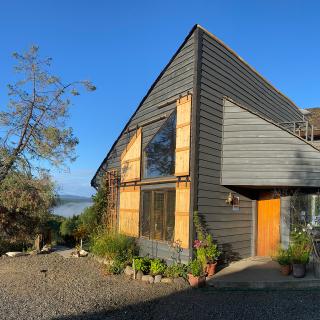
Capturing Fall Photography in the Cariboo
Churn Creek & Fraser River | Michael BednarSummer is behind us, and it’s time to get excited because autumn has arrived in the Cariboo! As a photographer, it is my favourite time of year to explore the region and capture fall photography.
There is something special about this time of year. The warm days and cool, crisp nights, along with the sounds of birds gathering in preparation for their journey south and the smells of fallen leaves and ripe fruit fill up the senses.
As a photographer, there is something extra special, almost magical, about autumn sights. The colours and quality of light on the landscape make it a photographer’s dream, particularly in the Cariboo, where the autumn sun’s rich glow illuminates a golden landscape.

Cariboo Mountains | Michael Bednar
Welcoming Fall in the Cariboo
The Cariboo is incredibly diverse in its variety of landscapes and ecosystems, which makes it a joy to photograph in the fall. The region is framed by the Fraser River on its western border, a semi-arid desert of sagebrush, grasslands, bighorn sheep and dramatic canyons. The Cariboo’s eastern border is guarded by the Columbia Mountains with large lakes and spectacular waterfalls that are lined with dense, moist forests of spruce, fir and cedar where moose and grizzly bears dwell.
In between are rolling hills strewn with ranches, meadows and lakes amongst Douglas fir forests that are home to mule deer and black bears. Throughout these unique areas are large groves of trembling aspen, which transform to yellow and, along with the grasslands, turn the landscape golden.

Crooked Lake – Horsefly, BC | Michael Bednar
At higher elevations in autumn, the nighttime temperature drops suddenly and the rivers and lakes remain warmer than the ambient temperature, creating a thick fog on waterways overnight and for excellent photography in the mornings. As the sun rises, the fog burns off to make for dramatic and fascinating fall photography.

Michael Bednar
Wildlife Photo Encounters in the Cariboo
Wildlife is on the move during fall. Bears feed on the remaining berries and salmon before their winter slumber. Deer and moose congregate to prepare to mate and travel to winter feeding grounds. Smaller mammals cache their food stores for the months ahead, and migratory birds gather to journey south. Incorporating wildlife into your photos (when able) adds another layer of interest to your fall photography.
A Fall Photography Cariboo Road Trip
If you are interested in a fall photography road trip, I highly recommend the Cariboo. The region has a diversity of unique landscapes, an abundance of lakes and rivers, wide-open spaces and is rich with a variety of wildlife.

Michael Bednar
Scenic Routes and Must-Visit Spots in the Cariboo
Explore the unique areas within the Cariboo region with a few of the best places for fall photography. Start in the arid grasslands and canyons along the Fraser River which extend from Lillooet to Williams Lake and beyond to Quesnel. Head west from Clinton through beautiful Cutoff Valley, and along the High Bar Road – which is absolutely spectacular. It is all gravel, and there are some steep, winding sections, so take an appropriate vehicle. If you want to stay for a few days and explore further, there are accommodations in Clinton if you enjoy horseback riding and other activities.
Just north of Clinton is Chasm Provincial Park. The short trip off the highway is highly recommended for unique geological features and gorgeous views and might provide the opportunity to photograph resident bighorn sheep during fall.
Heading north, the landscape transforms into rolling hills, with meadows and lakes scattered across the plateau. There are plenty of places to stay throughout the area to serve as a home base as you explore, photograph, and enjoy a myriad of things to do here in the fall including canoeing, fishing, mountain biking, horseback riding, and more.

Michael Bednar
North of 100 Mile House, heading east on Canim-Hendrix Lake Road you’ll discover larger lakes and rivers at the western base of the Columbia Mountains, along with dramatic waterfalls, dense forests and raw wilderness. Visit Canim and Mahood Falls and continue to loop along the gravel roads through to Horsefly and then on to 150 Mile House where you can complete the loop or continue your exploration. There are plentiful resorts and guest ranches for accommodations, including Crooked Lake Resort, which offers a beautiful area to explore along with excellent autumn hiking and fall photography opportunities.
Another popular autumn photography road trip route leaving from 100 Mile House is Highway 24 (the “Fishing Highway”) through the Land of Hidden Waters, where you’ll discover hundreds of crystal clear lakes, exceptional freshwater fishing and plenty of stunning scenery for avid photographers.

Michael Bednar
Fall Photography Tips
Whether a seasoned landscape photographer, amateur or new enthusiast, a few fall photography tips can help make the most out of your trip to photograph the Cariboo:
- Incorporate people or wildlife to provide a sense of scale and create a connection with the viewer.
- Photograph activities for a sense of place (i.e. biking, hiking, paddling, horseback riding, etc.) rather than static portrait-style images.
- Use complementary or contrasting colours in people’s clothing or other items to stand out against the autumn colours.
- If you are taking wildlife photos, try to get your subject amongst some autumn foliage (and be safe and respectful of their territory).
- A polarizing filter is very useful for photographing fall foliage as it intensifies and saturates the colours while reducing glare on wet leaves.
- Get up early, even if it is foggy or cloudy, and be patient! Use it to your advantage for moody shots while you wait. The sun will burn it off quickly, and you will be rewarded with dramatic scenes.
- The changing of the seasons brings changing weather patterns and can create some dramatic light on the landscape, so be prepared.
- Make use of backlight and sidelight for drama.
- Try to get a range of photo styles from wide landscapes to medium shots and up close for details.
Wherever your fall photography road trip takes you, keep your camera ready as there is a bounty of autumn beauty to capture, experience and enjoy.
By Michael Bednar
Michael Bednar is an award-winning travel and documentary photographer whose work has been recognized and published worldwide. His roots have always been in the outdoors, having studied and worked in forestry, fisheries and wildlife prior to turning to professional photography. Michael currently lives in the Cariboo. Visit his website to learn more.
Featured Partners
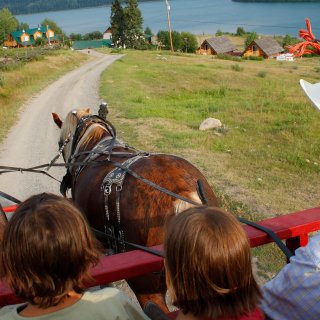
Spring Lake Ranch
Come and experience a peaceful get-away as the guests of the Barkowsky family. Tucked in the heart of British Columbia's Cariboo Country, Spring Lake Guest Ranch is a natural paradise, near 100 Mile House. The newly finished golden log cabins…
Chris Harris Photography
Chris Harris and Rita Giesbrecht work together to create incredible images, as well as publishing books, running a private gallery, plus organizing photography field trips to the backcountry of British Columbia to help others explore and discover the incredible imagery…
Days Inn 100 Mile House
Discover untouched beauty at our Days Inn 100 Mile House hotel located off Highway 97 "Cariboo Highway" which provides easy access to Flat Lake Provincial Park and Moose Valley Provincial Park. Take an ATV through spectacularly wooded trails, kayak and…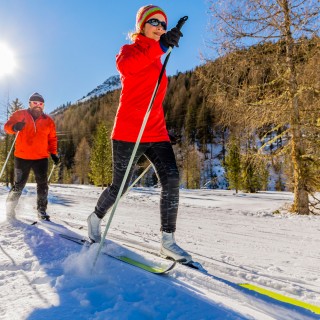
100 Mile Nordic Ski Society
The 100 Mile Nordic Ski Society is a volunteer-run club, operating the 99 Mile Trails just south of 100 Mile House, British Columbia. The club manages two distinct trail systems on the 99 Mile Hill, as well as a warm…
Westwood Motel
We are located on Highway 97 in the heart of the South Cariboo. Perpendicularly situated off the main road on a 1-acre property, the location provides a quiet and peaceful atmosphere. There's plenty of parking for all vehicle types, including…
South Cariboo Farmers' Market
From May 1st to October 2nd, every Friday morning from 9:00am to 2:00pm, downtown 100 Mile House transforms into a vibrant collection of vendors offering unique local goods right in the heart of town. Local musicians display their talent as…
Imperial Motel
Imperial Motel is a newly renovated low-mid range hotel with 26 room, 14 Kitchen units, and has 4 connecting rooms to accommodate individuals or large groups like hockey, soccer or basketball teams members during tournaments. Motel is in the heart…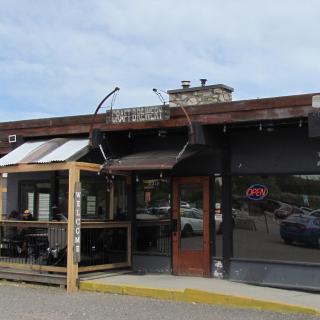
Cask & Cleaver Brewing
Cask & Cleaver is committed to producing authentic and unique beers that push the boundaries of regular brewing styles and categories. We’re proud to serve our customers with only the best, continually crafting each taste until it’s exactly right. Everyday,…
The Rusty Bucket
Open from April to Christmas, come to the Rusty Bucket to find modern, contemporary and traditional home décor. Find the perfect gift for a friend or browse the wide selection of housewares, jewellery, and accessories in a warm and comfortable…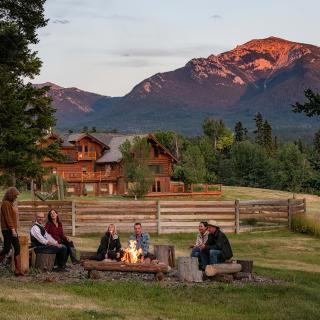
Echo Valley Ranch and Spa
Echo Valley is a small, eco-luxury Guest Ranch and Spa thoughtfully designed to inspire connection with the restorative elements of our natural surroundings. Discerning soft-adventure seekers are instinctively drawn to our respectful, sustainable and comfortable lifestyle. Step away from life’s…
Big Bar Guest Ranch
Weyt-K! Big Bar Guest Ranch is proudly owned by the Stswecem'c Xgat'tem First Nation. Here you will find traditional indigenous experiences interwoven with the day to day ranch life of a wrangler. Nestled in the heart of our Stswecem'c Xgat'tem…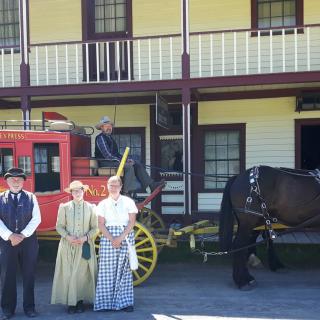
Historic Hat Creek
Step back in time and experience an original roadhouse built during the 1800's gold rush. Stagecoach rides, souvenir shop, restaurant, camping, cabins are all there to enjoy. You can even stay overnight in a covered wagon.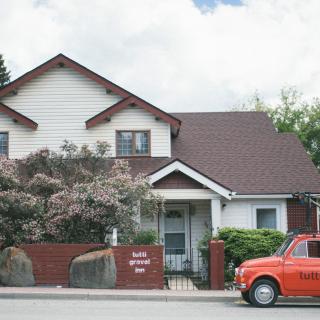
Tutti Gravel Inn
A very warm welcome to tutti gravel inn (aka TGI) located in Clinton, BC on the Historic Cariboo Gold Rush Trail within traditional Secwépemc territory. Established in 2019, TGI is the original and premiere gravel bike hotel in British Columbia…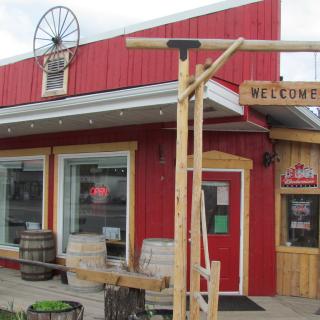
Cordial Restaurant Nouveau
Magical mystery stop, diner and cafeteria.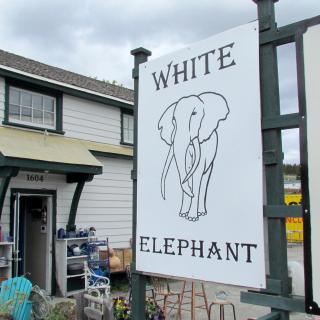
White Elephant Antiques and Uniques
Antiques, vintage, books, and jewelry.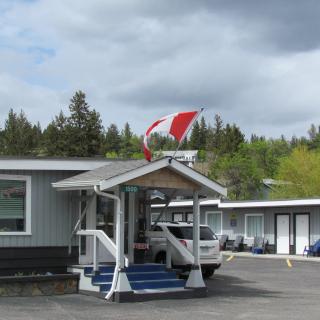
Nomad Motel
Motel located in Clinton. Clean, quiet, and affordable. Just a short walk away from the centre of Clinton. This motel features Wi-Fi throughout the property. A microwave, an electric kettle, and a refrigerator are featured in the rooms.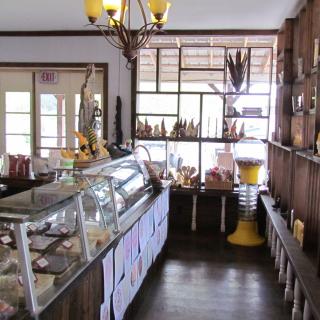
Hunnies Mercantile
Family-run treat shop in Clinton, BC. Ice cream, fudge, coffee, collectables. Farmer's Market every Sunday outside the shop from 10 am to 2 pm running from the spring to the fall.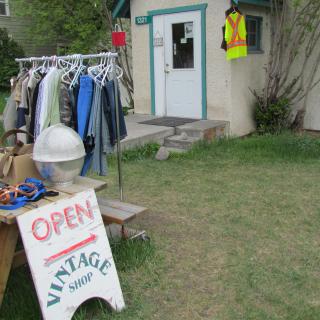
Mile 47 Vintage Shop
Vintage clothing and discontinued China.
Willow Springs Resort
Willow Springs Resort is open April to October. All sites are full service, tent sites, campfires, swimming, clean washrooms, hot showers, laundry, hiking, row boat, ice and wifi. Daily, weekly, and monthly rates are available.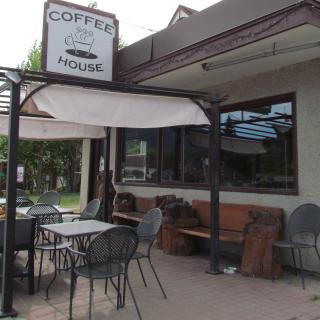
The Junction Coffee House
Locally owned, coffeehouse in Clinton, BC serving fresh brewed drip, specialty coffees (espresso) and loose leaf teas. Proudly serving "49th Parallel" coffee beans and teas. Fresh baked cookies and muffins daily. Open Thursday to Monday from 9:30 AM to 5…
Round Up Motel
Nice, clean, affordable motel in Clinton. Free Wifi and Parking.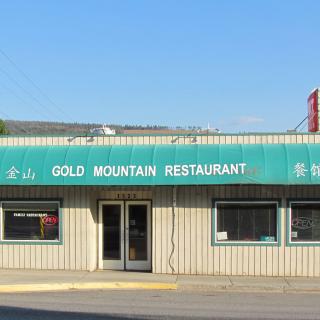
Gold Mountain Restaurant
Chinese cuisine for eat-in or take-out. Open mid-March to December. Closed Monday and Tuesday. Open Wednesday, Thursday, and Sunday from 11 AM to 8 PM and Friday and Saturday 11 AM to 9 PM.
Crooked Lake Resort
A beautiful, picturesque spot in the Cariboo Mountains of British Columbia, private and secluded. An off-the-grid, remote wilderness resort where our guests can escape the pace and encumbrances of modern day life, to enjoy seclusion, solitude and back-country recreation. We…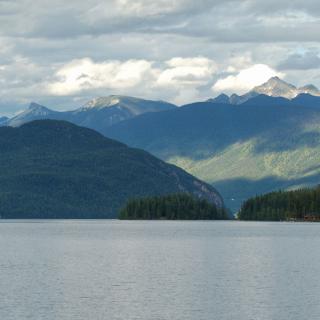
Horsefly Landing Resort
Come to scenic Horsefly Lake, just an hour from Williams Lake, BC. Enjoy your stay in a comfortable, and fully-equipped rustic log cabin. While you're here, discover the serene waters of Horsefly Lake and the scenery surrounding it while you…
Willow Grove B&B Inn & Traditional Arts School
Willow Grove B&B Inn is situated within the beautiful, historical gold rush town of Horsefly, British Columbia. Christina Mary, owner and operator of the Inn, is a long time local Horsefly resident and artist. The Inn is your ideal destination…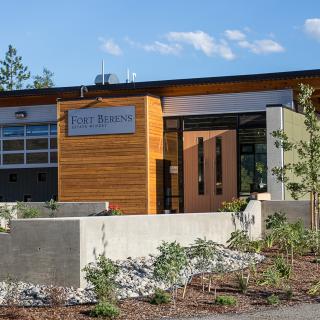
Fort Berens Winery
Fort Berens Estate Winery is a culmination of the dreams, vision and pioneering spirit of several entrepreneurs. It was founded with a pioneering spirit and forged on the road less traveled. The winery is owned by a team of eight…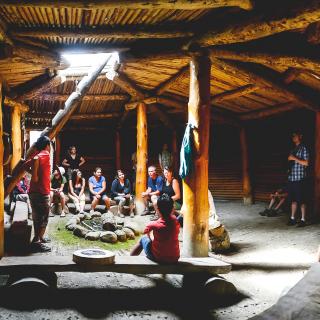
Xwisten Experience Tours
Visit the Bridge River Fishing Grounds - the past and current fishing area of the St'at'imc People. Learn about the traditional, wind-dried method of preserving the salmon still used by its people today. Also tour the extensive archaeological village site…
Lillooet Farmers' Market
A social hub for the whole community, market vendors and friendly locals congregate every Friday morning on Main Street for the Lillooet Farmers’ Market. If the surrounding views of the Lillooet Ranges aren’t reason enough to stop, the contagious energy…
Lillooet Museum & Visitor Centre
The Lillooet Museum & Visitor Centre is situated in downtown Lillooet in a former Anglican church. The original St. Mary's Church, which was torn down in 1960, stood on the same spot and arrived on the backs of miners and…
Arte Fact Jewels
Arte Fact Jewels specializes in handmade jewelry made in studio. Arte Fact jewels are available at seasonal markets, like the Lillooet Farmers' Market, at retail gallery locations in Williams Lake, Whistler and Wells, B.C., or by direct email or phone…
Lillooet Brewing Company
We are a craft brewery in the beautiful town of Lillooet. We have many beers on tap made right on site. As well we offer guest taps, cider, wine and non-alcoholic options. Food options include 10\" Pizzas from Backcountry Pizza…
Lillooet Community Connect HUB
The Lillooet HUB is a collective social enterprise that supports local artists, crafters, farmers, food producers, changemakers and small businesses. The HUB location on Main Street is the perfect place to purchase Lillooet Grown & Lillooet Made items, attend workshops…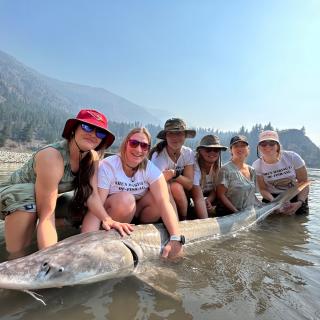
River Monster Adventures
We are a sturgeon fishing charter located in beautiful Lillooet, British Columbia. Our river is home to the biggest freshwater fish in North America, the white sturgeon. Our guided fishing trips will take you on an exhilarating journey as you…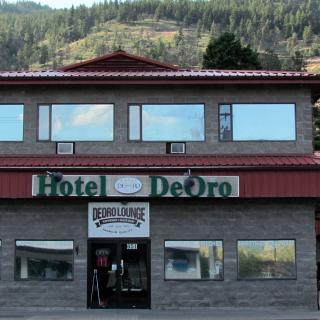
Hotel Deoro
Quality hotel in the centre of town near services, restaurants, and visitor information. The hotel is open year round. Guests have discounts at the Cookhouse and Curry Corner restaurants.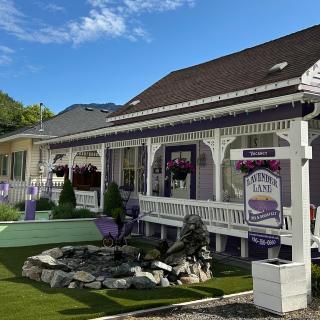
Lavender Lane Bed and Breakfast
One of the first original homes in Lillooet, BC dating back to approximately 1893. This home has been updated, added on to, had a million hours of hard work inside and out yet keeping its original look, we like to…
Grant A Wish
Gift boutique in the heart of Lillooet. Gifts, souvenirs, fashion, home decor, accessories, jewellery, books, toys, children\'s wear, Indigenous merchandise, and more!
Lillooet Inn Restaurant
Japanese and Western Cuisine. Healthy food options and homemade sauces.
KC Health & Gifts
The best spot for all your gift buying and vacation memory wishes. Highlighting a marvelous selection of jade carvings and sculptures, jewellery, local pottery, Native artwork and incredible carvings in stone, cedar and antlers.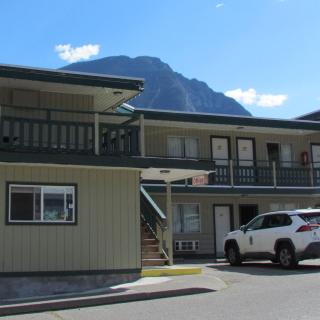
4 Pines Motel LTD
Discover the majestic sites that Lillooet has to offer and stay at the cozy 4 Pines Motel. Since 1960, 4 Pines Motel has been a comfort to Lillooet travelers seeking quiet, clean rooms. From our convenient downtown location, we have…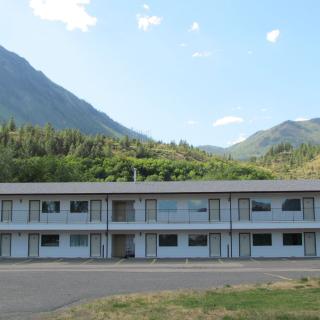
Retasket Lodge & RV Park
Our 20 room motel and 8 site RV park on top of beautiful Lillooet, British Columbia, Canada is set in a casual outdoor setting, featuring spacious, comfortable, beautifully appointed, non-smoking rooms. Most of our rooms have two queen beds. We…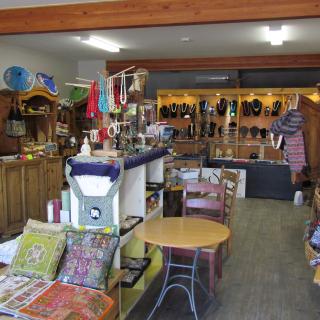
Blue Sapphire Gift Shop
Blue Sapphire gift shop is located in Lillooet, BC on the main street. You can find jewelry, gifts, and old world treasures at this store.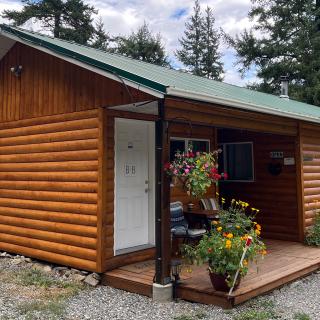
Texas Creek Campground, B&B, Cabin
We are a small campground offering RV site (14 Amp), Bed and Breakfast, a cabin, and tent sites.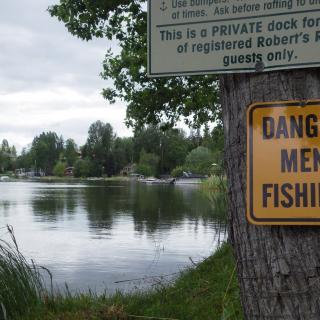
Robert's Roost Resort
We welcome old and new visitors to enjoy this beautiful RV park and campground situated on the shores of Dragon Lake. The campground is located 10 minutes south of downtown Quesnel with a large selection of RV sites. Dragon Lake…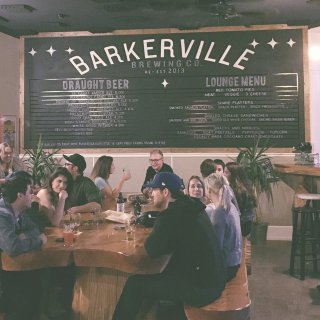
Barkerville Brewing Co.
Barkerville Brewing Co. is BC's historic brewery whose beers tell the story of the Cariboo gold rush. Our lounge offers 12 different beers on tap to enjoy in our cozy, social atmosphere. Our food menu features all local fare from…
Quesnel Golf Club
Quesnel Golf Club is Central and Northern British Columbia’s finest golf course. The 6404-yard course is surrounded by beautiful vistas and a carefully laid out variety of trees emphasizing the fairways. The Quesnel Golf Club Snack Bar is the perfect…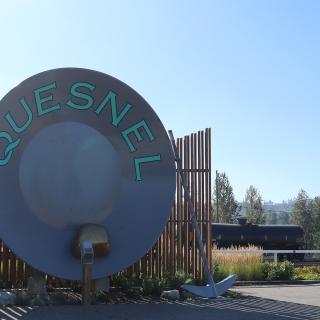
Bike Rentals - Quesnel & District Recreation Centre
Bike Rentals available NOW! complete with helmets. Available at the Quesnel & District Recreation Centre. The Quesnel Bike Park is located in behind the Quesnel & District Recreation Centre. It is open year round for bikes or snowshoeing in the…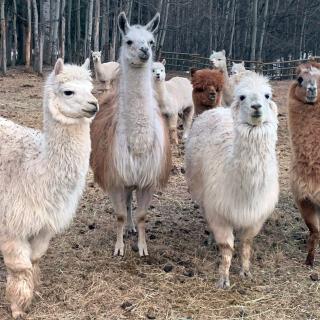
Moose Meadows Farm
Moose Meadows Farm (established 2002) is located 15 km. west of Quesnel in the rural community of Bouchie Lake. Owned and operated by two Professional Foresters, it is a diverse operation that practices both conventional and innovative farming practices. The…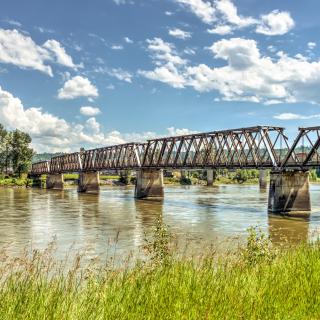
Quesnel Downtown RV Park and Campground
Quesnel Downtown RV Park & Campground is located along the Quesnel River, within walking distance of the shops and restaurants of downtown Quesnel, accessible via the Riverfront Trail. Find out more about what to do during your stay at tourismquesnel.com.…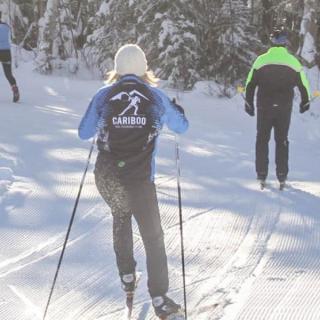
Hallis Lake Ski & Snowshoe Trails
With a network of over 75 kilometres of trails, Hallis Lake is one of the most popular winter destinations in Quesnel. Strap on a pair of cross country skis or snowshoes and head out with the family; all the gear…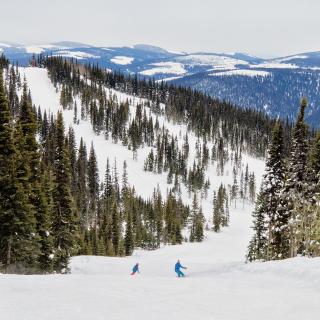
Troll Resort
Troll Resort boasts Big Mountain verticals with a small mountain feel. When you arrive at Troll Resort, you are part of the Troll family. It’s how we roll. Since you are considered family, we treat you as such. Our 2nd…
Sandman Quesnel
Discover a place rich in Cariboo Gold Rush history, offering an array of hiking trails, plus vibrant and beautiful scenery as far as the eye can see. Whether a quick stopover or extended stay, you’ll find the gold standard in…
Prestige Riverside Lodge Quesnel
As the newest addition to the Prestige Hotels and Resorts family, the Prestige Riverside Lodge Quesnel offers a serene retreat right on the banks of the Quesnel River. Start your day with a complimentary hot breakfast and enjoy the array…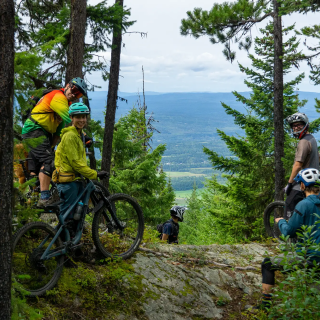
Gold Rush Cycling Club
The Gold Rush Cycling Club’s main objective is to maintain, enhance and develop sustainable mountain bike trail networks within the city of Quesnel and the Cariboo Regional District. As an incorporated, not-for-profit society, we are developing a legal trail network…
Sandman Hotel & Suites Williams Lake
Renowned for its spectacular scenery, history and culture, Williams Lake is an ideal pick for those who seek adventure, relaxation, a business stopover or simply a great vacation stay. Located in the heart of BC?s interior, surrounded by gorgeous mountain…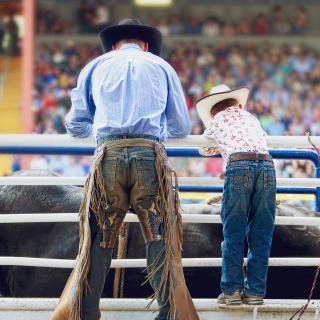
Williams Lake Stampede
Over the July 1st long weekend each and every year, Williams Lake, BC, rolls out the welcome mat as visitors arrive from around the world to enjoy several days of Canadian Professional Rodeo Association action at the World Famous Williams…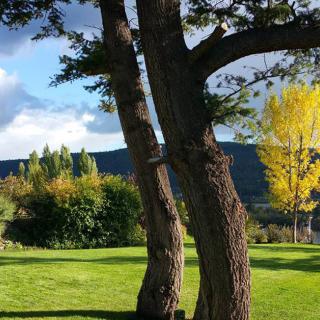
Drummond Lodge
Located within easy walking distance to downtown Williams Lake, restaurants, Scout Island beach and nature trails. Featuring 18 regular and deluxe rooms and 6 large suites and junior suites, the Drummond Lodge Motel is a perfect location for visiting families…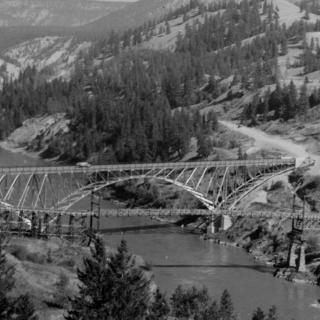
Museum of the Cariboo Chilcotin
The Museum of the Cariboo Chilcotin hosts a collection of nearly 30,000 artifacts exhibiting the depth and breadth of the region's history. Stop by to view the western displays, including the largest saddle collection in Western Canada and the BC…
Ramada Williams Lake
Book your stay at the only full-service hotel in Williams Lake, located steps from downtown for shopping, restaurants, and activities. Relax in one of the 57 rooms, complete with flat screen televisions and air conditioning. Stay in shape at the…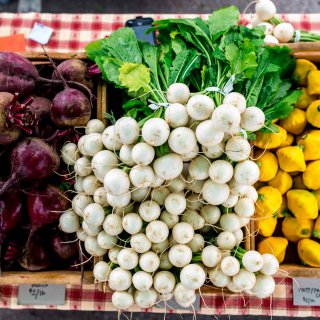
Williams Lake Farmers' Market
Not unlike other regional markets, the Williams Lake Farmers’ Market was started by a small group of farmers who wanted a local venue to sell their produce. More than 20 years and one location change later, the Friday morning market…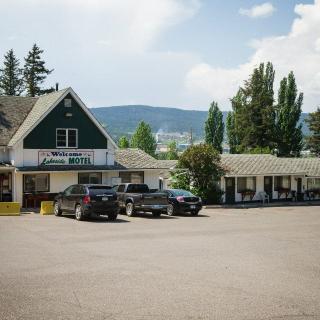
Lakeside Motel
Great old-fashioned motel, offering quaint rooms with lovely views of Williams Lake. The Lakeside Motel offers 32 cozy, neat and clean rooms. Free newspapers, private yards, unlimited WiFi, public parking and coffee makers are also available to complete the home-away-from-home…
Spectra Power Sports Ltd
Located in Williams Lake, BC, Spectra Power Sports Ltd. is an Aboriginal owned and operated business dealing in Polaris product. We are a full line Off Road Vehicle Dealer (ATV, Side by Side & Snowmobile). Spectra Power Sports Ltd is…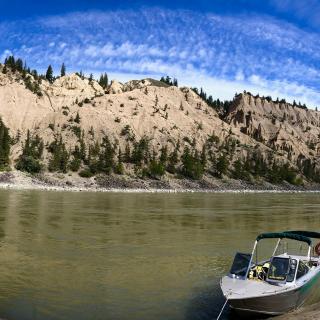
Cariboo Chilcotin Jetboat Adventures
Cariboo Chilcotin Jetboat Adventures offers tours 15 minutes west of Williams Lake BC. Tours begin in May and end in October. We offer day trips and multi day trips showcasing beautiful river scenery, Indigenous culture sharing experiences, gold rush history…
Station House Gallery
The Station House Gallery is located inside Williams Lake's oldest standing building, the historic Station house originally built in 1919 by the Pacific Great Eastern Railway. The Station House Gallery hosts rotating exhibitions in a variety of mediums by local,…
Central Cariboo Arts and Culture Society - Performances in the Park
The Central Cariboo Arts and Culture Society is a BC registered non-profit, operating under contract by the Cariboo Regional District and the City of Williams Lake. CCACS manages the Central Cariboo Arts Centre, facilitates grants and Fee-for-Service funding, and offers…
Williams Lake Golf and Tennis Club
The Williams Lake Golf & Tennis Club offers a variety of facilities to ensure that your golfing experience is second to none. In addition to our 18-hole course, we offer onsite camping, delicious dining at the Fox\'s Den Bar &…
Williams Lake Studio Theatre Society
Founded in 1955 by Gwen Pharis Ringwood, the Williams Lake Studio Theatre Society (WLSTS) proudly produces quality productions year after year for Williams Lake and the surrounding area. Over the course of its performance season, the WLSTS will produce three…